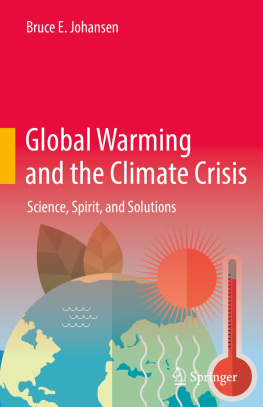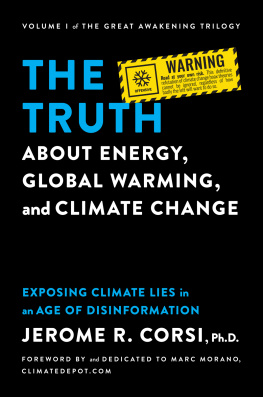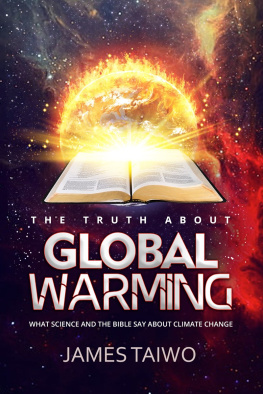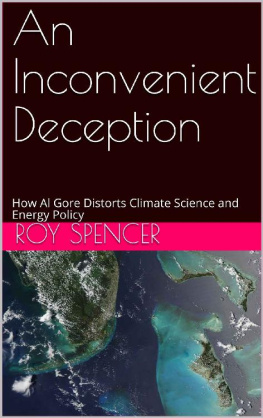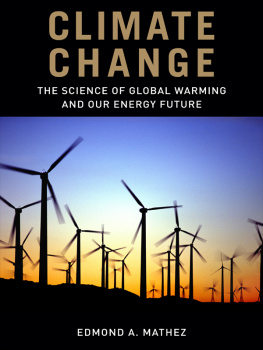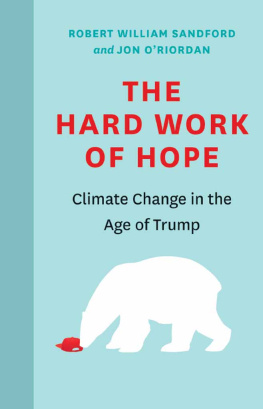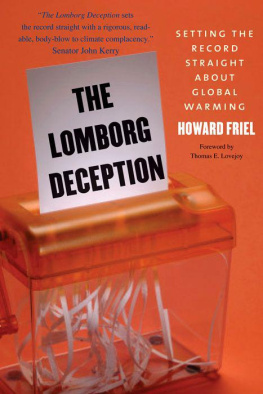
Earth, as seen by the DSCOVR satellite, positioned about 1 million miles away.

Lagrange Point 1, Outer Space, December 8, 2015

Mention of specific companies, organizations, or authorities in this book does not imply endorsement by the author or publisher, nor does mention of specific companies, organizations, or authorities imply that they endorse this book, its author, or the publisher.
Internet addresses and telephone numbers given in this book were accurate at the time it went to press. Extensive efforts have been made to ensure the accuracy of the information contained in this book. Any errors brought to the publishers attention will be corrected in future editions.
2017 Al Gore
All rights reserved. No part of this publication may be reproduced or transmitted in any form or by any means, electronic or mechanical, including photocopying, recording, or any other information storage and retrieval system, without the written permission of the publisher.
Page numbers listed below refer to the print edition of this book.
Illustration and photography credits appear on pages 318320, which constitutes an extension of the copyright page.
The green ring and Earth logo is a trademark of The Climate Reality Project.
Library of Congress Cataloging-in-Publication Data is on file with publisher.
ISBN 978-1-63565-108-9 paperback
ISBN 978-1-63565-109-6 e-book
Published by

733 Third Avenue
New York, NY 10017
rodalebooks.com
Produced by

124 West 13th Street
New York, NY 10011
melcher.com
This book is dedicated to my children: Karenna Gore, Kristin Gore, Sarah Gore Maiani, and Albert Gore IIIand to my grandchildren, Wyatt Schiff, Anna Schiff, Oscar Schiff, and Aria Maiani

At this point in the fight to solve the climate crisis, there are only three questions remaining:
Must we change?
Can we change?
Will we change?
INTRODUCTION
Having spent the better part of my life for the past several decades trying to learn from experts on the climate crisis and working with technology and policy innovators to develop solutions for the unprecedented challenge humanity faces, I have never been more hopeful.
At this point in the fight to solve the climate crisis, there are only three questions remaining:
Must we change?
Can we change?
Will we change?
In the pages that follow, you will find the best available evidence supporting the overwhelming conclusion that the answer to the first two of these three questions is a resounding Yes.
I am convinced that the answer to the third questionWill we change?is also Yes, but that conclusion, unlike the answer to the first two questions, is in the nature of a prediction. And in order for that prediction to come true, there must be a continued strengthening of the global consensus embodied in the Paris Agreement of December 2015, in which virtually every nation on Earth agreed to take concerted action to reduce net greenhouse gas emissions to zero as early in the second half of this century as possible.
That strengthened consensus depends in turn upon the continuing growth of a global grassroots movement to encourage political leaders in every nation to take even bolder steps than the ones agreed to in Paris. Luckily, that grassroots movement is already growing rapidly, not only among activists and leaders of civil society but also among business leaders, investors, mayors, and other elected officials who recognize that the stakes have never been higher. As more and more people come to the same realization that we really must change, the movement continues to gain momentum.
In other words, all three of these questions are intimately interrelated. In order to accelerate and complete the historic transformation of global civilization that is already under way, it is first necessary to come to grips with the unprecedented threat to humanity posed by our continued reliance on fossil fuels, our unsustainable industrial transportation, agriculture, forestry, and ocean management practicesand our habit of short-term thinking that blinds too many of us to the unimaginable damage we are causing. And in order to summon the will to act with the requisite boldness, we have to have confidence that once we commit ourselves, we can succeed.

A young woman holds a symbolic tulip at a climate change demonstration.

Paris, France, December 12, 2015

Arctic meltwater gushes from an ice cap.

Nordaustlandet, Norway, August 7, 2014
So lets begin with the first question: must we change?
In some ways, it is easy to understand one of the main reasons it has taken so much time to fully recognize the self-destructive nature of our current pattern. After all, humanity has gained immeasurable benefits from the burning of fossil fuelshigher standards of living, longer lifespans, historic reductions in poverty, and all of the blessings of the elaborate global civilization that has been developed over the past 150 years.
Moreover, because we still depend on fossil fuels for more than 80 percent of the energy that powers our civilization, we are naturally daunted by the prospect of a rapid transition to renewable sources of energy and the speedy development of much higher levels of efficiency in all human activities.
Nevertheless, the obvious and overwhelming evidence of the damage we are causing is now increasingly impossible for reasonable people to ignore. It is widely known by now that there is a nearly unanimous view among all scientists authoring peer-reviewed articles related to the climate crisis that it threatens our future, that human activities are largely if not entirely responsible, and that action is needed urgently to prevent the catastrophic harm it is already starting to bring.







